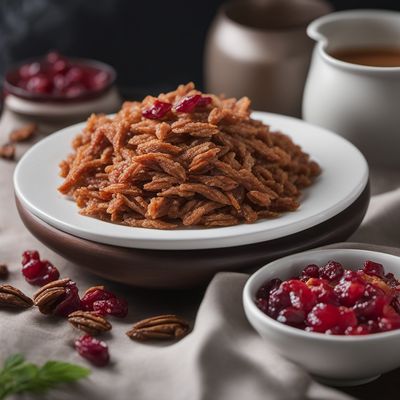
Ingredient
Spirulina
Superfood Algae
Spirulina is a microscopic algae that thrives in warm, alkaline waters. It has a vibrant green color and a distinct earthy flavor. With its high protein content and abundance of vitamins and minerals, spirulina is often used as a dietary supplement or as an ingredient in smoothies, energy bars, and health-focused recipes.
Origins and history
Spirulina has a long history of consumption, dating back to ancient civilizations such as the Aztecs and Mayans. It was harvested from natural lakes and used as a food source due to its high nutritional value. Today, spirulina is cultivated in controlled environments, ensuring its purity and quality. It is commonly found in regions with suitable climate conditions, such as Africa, Asia, and Central America.
Nutritional information
Spirulina is a nutritional powerhouse, packed with essential nutrients such as protein, vitamins (including B vitamins and vitamin K), minerals (such as iron, magnesium, and potassium), and antioxidants. It is also a rich source of chlorophyll, which gives it its vibrant green color. Spirulina is low in calories and contains no cholesterol.
Allergens
Spirulina may cause allergic reactions in individuals with seafood or iodine allergies. It is advisable to consult a healthcare professional before consuming spirulina if you have any known allergies or medical conditions.
How to select
When selecting spirulina, opt for reputable brands that offer high-quality, organic spirulina powder or tablets. Look for products that have undergone third-party testing to ensure purity and absence of contaminants. Check the expiration date and packaging for any signs of damage or tampering.
Storage recommendations
To maintain the freshness and potency of spirulina, store it in a cool, dry place away from direct sunlight. Ensure that the container is tightly sealed to prevent moisture or air exposure, which can degrade its quality. Avoid storing spirulina near strong-smelling substances, as it can absorb odors easily.
How to produce
Spirulina can be produced commercially in controlled environments such as ponds or tanks. It requires warm temperatures, alkaline water, and access to sunlight. However, producing spirulina at home may be challenging due to the specific requirements and expertise needed.
Preparation tips
Spirulina can be added to smoothies, juices, or energy bars for a nutritional boost. It can also be incorporated into savory dishes such as soups, sauces, or salad dressings. Start with small amounts and gradually increase the quantity to adjust to the taste and desired intensity of the flavor.
Substitutions
Chlorella, another type of algae, can be used as a substitute for spirulina. It shares similar nutritional properties and can be used in similar culinary applications. However, the flavor and color may differ slightly.
Culinary uses
Spirulina is commonly used as a dietary supplement, added to smoothies, energy bars, and health-focused recipes. It is also used in savory dishes such as soups, sauces, and dressings to enhance the nutritional content.
Availability
Spirulina is cultivated and commonly available in regions with suitable climate conditions, such as Africa, Asia, and Central America. It is also widely available as a dietary supplement in health food stores and online retailers.

